Interview with Elena Peteva by Yassen Vassilev

Elena Peteva was born in Sofia, Bulgaria in 1978. She lives and works in the United States, where she moved in 1995. She studied at the Interlochen Arts Academy (1995-1997), the Pennsylvania Academy of the Fine Arts (1999-2004), as well as at the private studios of Odd Nerdrum in Norway and Bo Bartlett in Pennsylvania. She graduated with her M.F.A. in Painting from Syracuse University in 2007.
Elena Peteva is a three-time recipient of the Elizabeth Greenshields Foundation grant for international representational art (1997, 2000 and 2005). Artists’ House Gallery in Philadelphia, PA, has represented her work since 2003. Some of her paintings have been included in exhibitions at the Schweinfurth Memorial Art Center, New York, and the Arnot Art Museum, New York. Recently she was in the 2008 Biennial: Contemporary American Realism at the Fort Wayne Museum of Art in Fort Wayne, Indiana.
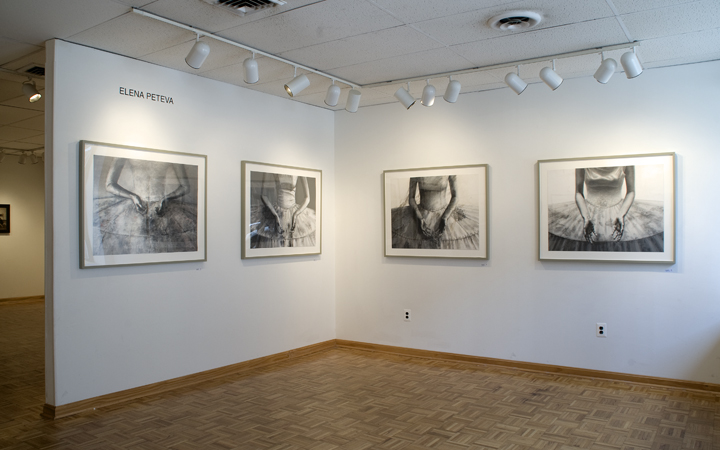
Conversations with the artist while she was drawing Yassen in her studio.
On allegory and her work:
Today, as artists, we are presented with an incredibly rich plethora of artists’ works, styles, methodologies and ideas, which we can draw inspiration from, respond to, reconsider and use to our own creative ends. My ideas, images, metaphors, techniques and working processes undeniably stem out of the Western artistic tradition, which I like to simultaneously embrace, manipulate, play with, alter and break. I believe one should not reject the previous generations but use them to one’s own advantage.
I would describe most of my work as allegorical representation of our contemporary individual and social states. What interests me most is our human duality and multi-faceted nature. I seek to capture the coexistence of vulnerability and power, uncertainty and conviction, depravity and elevation in one and the same individual and/or society. I work with incomplete narratives, series, or diptychs of juxtaposed images, which function as allegorical constructions left open to the viewer’s interpretation.

Innocent the Xth series, 29”x 23” each, charcoal, pencil and acrylic on paper
Allegory… a straight-forward definition of allegory would be: a picture, story or play in which characters or events are used to symbolically represent ideas or principles. It has a long tradition in art as a powerful message-carrier, which is still the case today, only the iconography and meaning of contemporary allegory are not as fixed as they were in the time of the Old Masters.
Whereas the Old Masters used symbols, which had culturally assigned meanings and could be easily deciphered by their fellow viewer (for example a Vanitas still-life), contemporary allegorical art’s signifiers are inconclusive and essentially open-ended because of the multiplicity of their possible meanings and interpretations.
The later kind is not a singular representation of a story or a message – it is not simply an illustration of an idea, where all the answers are readily “served” to the viewer. Indeed, the artist can influence the viewer through visual, conceptual and emotive means and set off the viewer’s perception, interpretation and emotions in a particular direction. What is crucial, however, is not to become a puppeteer – the artist must put the viewer on the path to the idea but also let her/him decode the meaning/s of the image on her/his own.
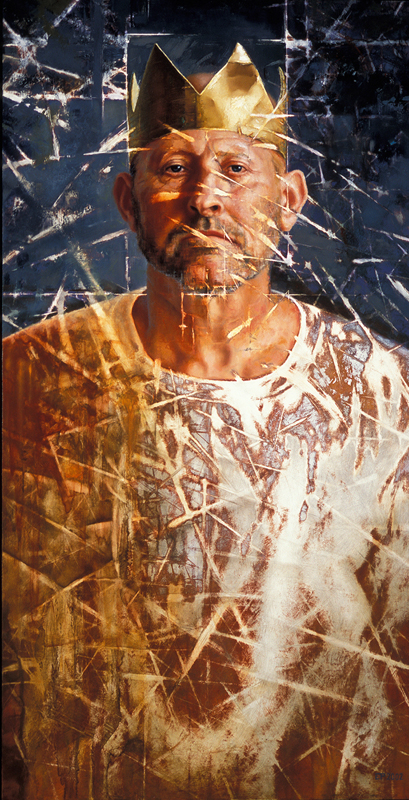
The King, 33” x 17”, oil on panel
Thus, I am not after a literal meaning or a singular or immediate interpretation of my images. I aim to woo in the viewer through visual stimuli and layered subtle signs, which would invite her or his reflection, introspection and a slower, more in depth interpretation of the image. Why so weary of the explicit? I think, too often too much is said, too much is over-simplified and offered to the viewer already pre-digested. Whether in theater, writing or visual art often what is most powerful is actually what is left unsaid, leaving the audience room to think, feel and reflect. The challenge for me is in finding a balance between how much or how little is revealed – how much would make my image too obvious and how little would make any meaning completely illegible, beyond the possibility of any interpretation.
Is the viewer taken into account when art is created or the artist creates solely for oneself? That depends on the point of view; probably there is no right answer. Still, sooner or later the artwork is shown and seen. An artist certainly does not create art just to lock it in the closet. It is only human to want to share and express, and a certain sense of fulfillment comes when one has been understood, even if only partially.
On representation:
I think representation offers the strongest viewer-artwork connection – one can easily relate to and possibly identify with something that can be perceived as real, whether a figure, a still-life, an interior or a landscape, vs. an imaginary or an abstract image. Still, in the end, what determines the power of the work, whatever its type, is the strength of its idea, its visual qualities and its technical execution – the power of its image and its impact on the viewer.
In working from direct observation it is important to know how to really see and have the technical proficiency to capture what one is looking at – to be able to observe and represent reality objectively – which is really difficult in itself. Let us take a portrait, for example, it is essential to look at and draw from the sitter rather than try to imagine and depict him or her. The imagined would be distanced from the real and inevitably altered.
Nevertheless, I think, the best portrait is the one that weaves together the objective, the physical reality of the subject, which changes all the time as a face’s expressions constantly change, and the subjective – the interpreted or the sensed – the artist’s personal perception of the sitter and insight into his or her inner state.
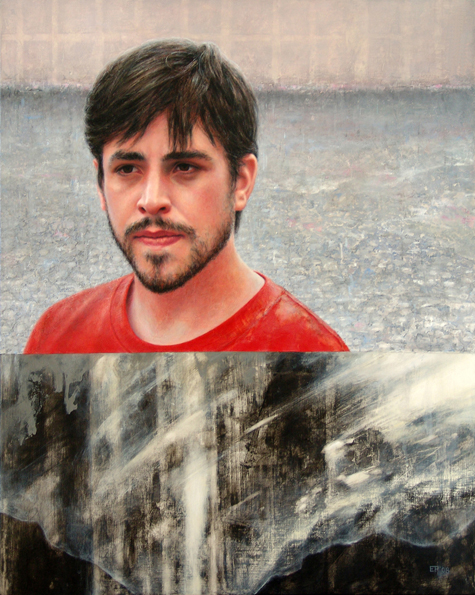
A Man in Doubt, 25”x 20”, oil on panel
On inspiration, ideas and her works:
Inspiration? Usually everything starts with the human experience. It could be something in my personal life, something I have observed in society or the world, or something that has captivated me in somebody else’s creative work, for example, Italo Calvino’s Invisible Cities, Samuel Beckett’s Waiting for Godot or Pieter Bruegel’s The Parable of the Blind Leading the Blind. The themes in my work change, but sooner or later old images and motifs reemerge. I think it is like that for many artists. Some ideas come back not as a repetition, but as a reexamination – more layered and more mature, I hope.
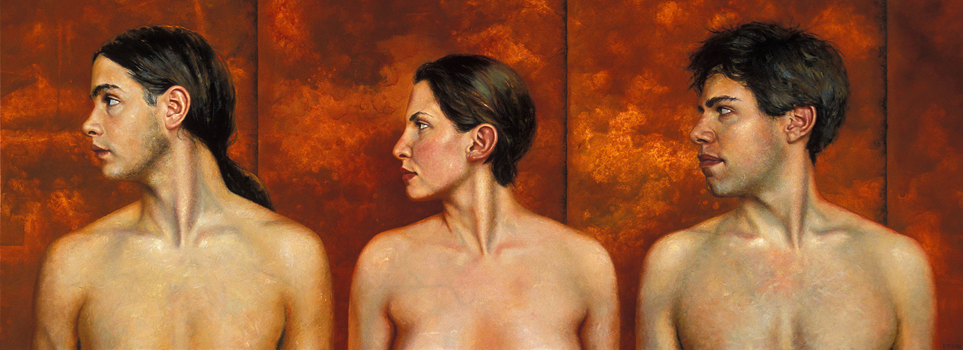
The Blind, 22”x 60”, oil on panel
One of my favorite Old Master allegory paintings is Bruegel’s The Parable of the Blind Leading the Blind. It illustrates the biblical line of Christ “And if the blind lead the blind, both shall fall into a ditch”. Bruegel’s painting is both moralizing and darkly humorous and, I think, too often seems to tragically resonate with our contemporary state of affairs. My painting of The Blind is an allegory for a contemporary blindness. All three figures are looking for something, very likely the same thing, but they are so focused on what they are searching for that they are incapable of seeing the reality of what is right in front of them, making them metaphorically “blind” and essentially in a state of complete disconnect from each other despite their intimate proximity.
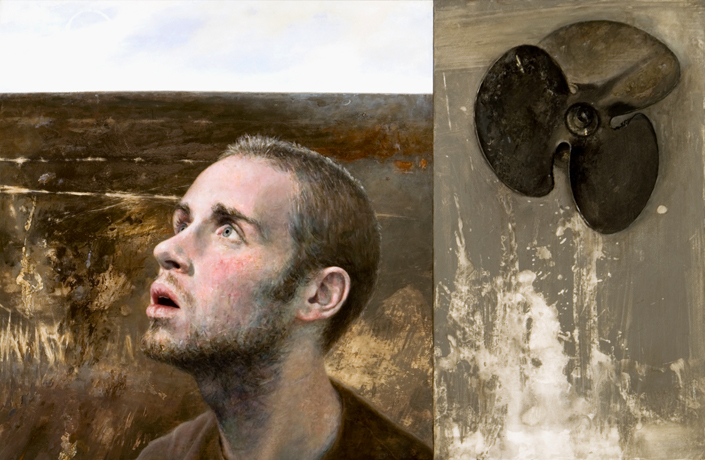
Watching Them Come, 22”x 33.5”, oil and acrylic on panel
In Watching Them Come I was interested in the combination of the realism of the image with a certain level of abstraction, where the two function together. This is a way for me to create a more complete representation – not only of the outer world of reality or what the face expresses of the inner one but also an expression of the inner state through the abstraction. Thus the outer – the surrounding space, the figure-ground relationship, the light-shadow relationship, the marks, surfaces and processes – becomes an important signifier of the internal state of the represented and outer reality becomes emblematic of inner reality.
Many years ago I saw a sculpture in Rotterdam, the Netherlands, of an old man looking at the sky as the airplanes were flying over about to bombard the city during World War 2. The memory of it stayed with me and was a reoccurring image in my sketchbooks for a long time until it finally took form in Watching Them Come. In the painting the planes are not visible, only the young man looking at them in a helpless awe, soon to perhaps turn into horror, and the propeller, a signifier for the invisible to the viewer approaching mechanical force.
In the To Dirtify series the hoop dress became a symbol for human experience – the grandness and weight of one’s experiences, which one wears or carries inside everywhere and always. The series represents a beautiful human experience, which has been metaphorically soiled or dirtified (as an antonym of “to purify”), depicting – the recognition that one’s hands and dress have been dirtified (I), the helplessness and inability to do anything (II), the mourning and resignation to the fact that the soiling is irreversible (III) and finally the dropping of one’s hands in acceptance (IV).
To Dirtify series, 29.5”x 39.5” each, charcoal, pencil and acrylic on paper
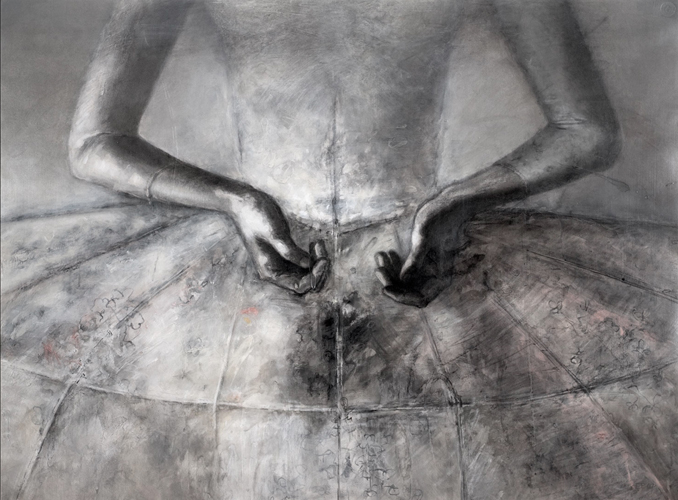
To Dirtify I
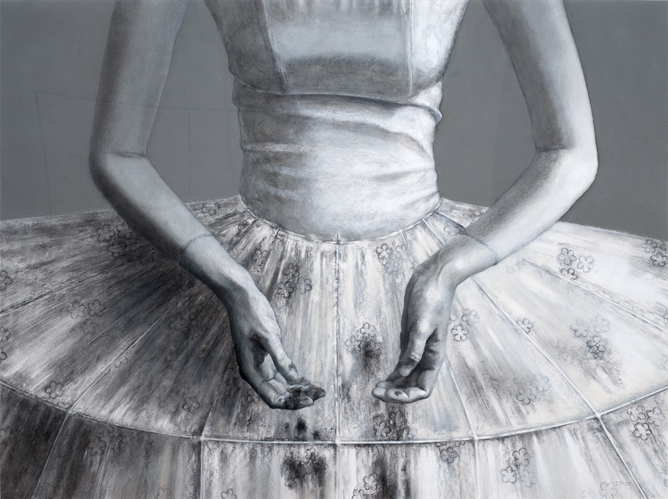
To Dirtify II
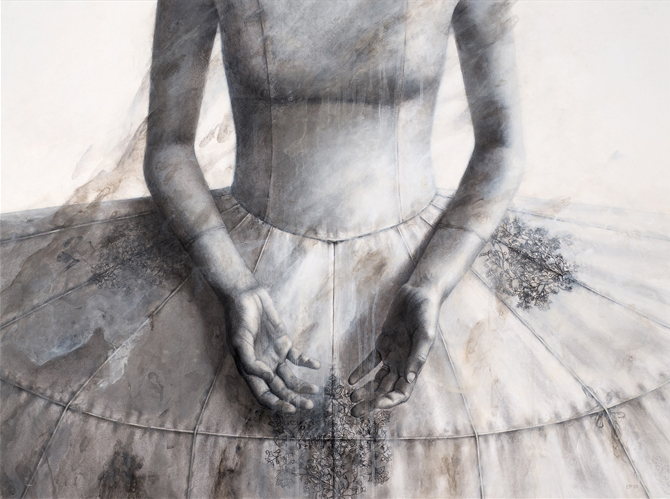
To Dirtify III
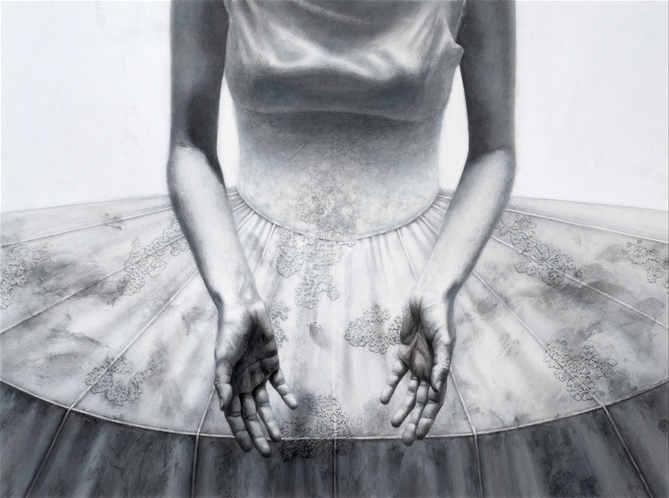
To Dirtify IV
You can see more of Elena Peteva’s work on the website of Artists’ House Gallery at www.artistshouse.com.
Now, the portraits are completed – Elena’s of Yassen and Yassen’s of Elena.
Photographs by Karen Mauch











2 comments so far ↓
Nobody has commented yet. Be the first!
Comment